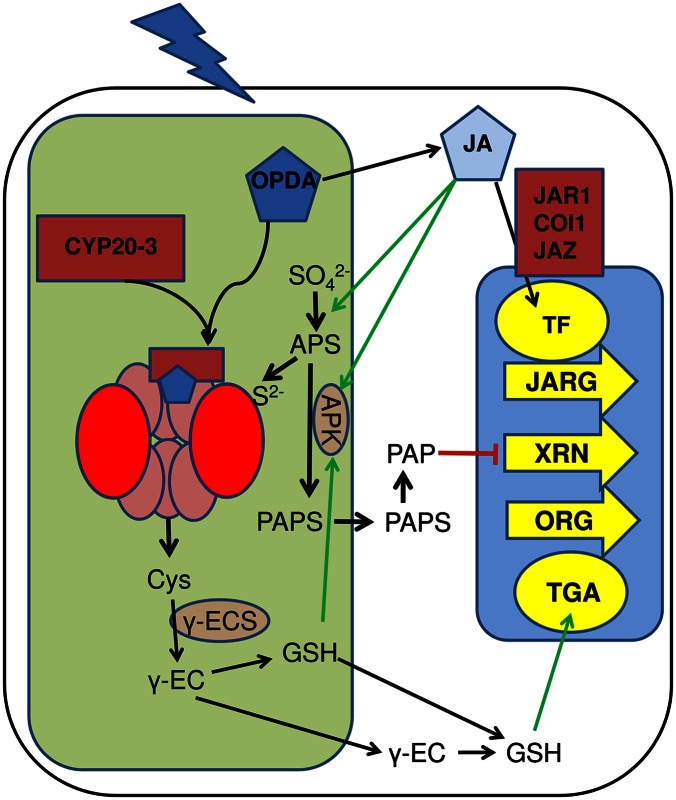Fig. 1.
Scheme of the interaction between OPDA signaling and sulfur metabolism. Park et al. (3) show that the OPDA synthesized in the chloroplast in reaction to stress binds to cyclophilin CYP20-3, and the hormone–receptor complex interacts with SAT to stabilize formation of cysteine synthase and increase cysteine synthesis. Cysteine is metabolized to glutathione (GSH), resulting in changes of redox homeostasis in plastids, as well as in the cytosol. The cytosolic GSH migrates to the nucleus to activate TGA transcription factors and induce transcription of OPDA-responsive genes (ORG). In parallel, OPDA is metabolized to JA, which up-regulates set of genes responsive to JA (JARG). Among JARGs are genes for components of sulfate assimilation, providing the reduced sulfur needed for increased cysteine production. The redox signaling may be coupled with PAP retrograde signaling: reduced GSH in plastids activates adenosine 5′-phosphosulfate (APS) kinase, synthesizing PAPS, which is converted in the cytosol to PAP. Increased PAP blocks XRN ribonucleases and triggers changes in transcript levels of another subset of genes.

